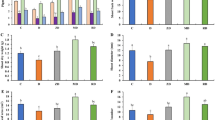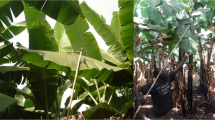The severity of clubroot (Plasmodiophora brassicae) on Chinese cabbage was reduced by growing plants such as oats, spinach and leafy daikon prior to Chinese cabbage in pot experiments. Resting spore densities of P. brassicae in the soil were 29–62%, depending on the pervious crop, as compared to unplanted control plot after ploughing under the previously cultivated plants. Root hairs of the preceding plants were infected with P. brassicae, but clubbed roots were not formed on these plants. The results indicate that these plants functioned as decoy plants reducing the resting-spore density in soil and thereby suppressing disease severity.
Similar content being viewed by others
Author information
Authors and Affiliations
Additional information
Received 21 February 2000/ Accepted in revised form 5 September 2000
Rights and permissions
About this article
Cite this article
MURAKAMI, H., TSUSHIMA, S., AKIMOTO, T. et al. Reduction of Spore Density of Plasmodiophora brassicae in Soil by Decoy Plants. J Gen Plant Pathol 67, 85–88 (2001). https://doi.org/10.1007/PL00012994
Issue Date:
DOI: https://doi.org/10.1007/PL00012994




